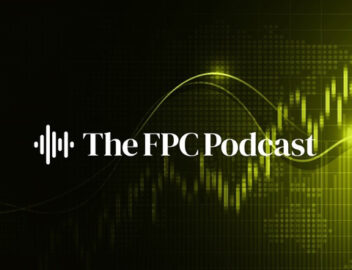

Thank you!
Just one more thing before you go...

Less is More: Tag Fatigue

Publishers in the digital advertising space find themselves facing a formidable challenge— too many tags on their webpages. This challenge is being exacerbated by the complexities of signal loss and the proliferation of alternative identity (AltID) propositions in the market. Striking a delicate balance is imperative, for as publishers integrate more unique tags to boost AltID revenue, they must tread cautiously to avoid undermining their long-term business operations.
Tags, those snippets of code embedded in web pages by publishers, serve a myriad of functions— ad serving, analytics, social media widgets and user tracking. However, too many tags can lead to a cascade of problems, the most important being the potential slowdown of loading times, which in turn, jeopardizes user experience and page latency. This latency not only prompts users to abandon slow-loading pages but also adversely impacts engagement metrics such as session depth, time on site and return visits.
The repercussions extend beyond user experience, delving into the realm of search engine optimization. Search engines consider page speed as a ranking factor, meaning slower-loading pages may have lower rankings on search engine results pages (SERPs). Consequently, publishers will face diminished organic traffic and visibility in an era where traffic challenges are already a cause for concern. In a world where traffic headwinds are already causing concern, publishers should be cognizant of any and all implications on their traffic referrers.
The challenges inevitably culminate in a trifecta of decreased page monetization. First, slow pages drive users away, eroding the overall user experience and diminishing site visits. Secondly, users might bounce from the site before ads have loaded, rendering those ads unviewable. This directly impacts viewability, a crucial campaign metric that influences advertisers’ payments for ad spots. If an ad is unviewable, advertisers may request refunds.
Similarly, minimal session depth and time on page contribute to a lower number of ads per visitor. This decline may stem from a lack of subsequent pageviews or a slower refresh rate on a single page. Consequently, publishers find themselves contending with financial setbacks as the metrics crucial to advertisers are compromised.
Beyond fiscal concerns, there is an urgent need for publishers to be cognizant about the types of third-party tags infiltrating their pages. Data leakage, particularly of sensitive consumer information, is a growing area of focus. Publishers, whether intentionally or inadvertently, sharing data with third parties pose a threat to user privacy and can lead to reputational damage. Curtailing the number of third-party tags on a page empowers publishers to exercise greater governance over their data and mitigate potential risks.
In the ever-evolving landscape of digital advertising, the integration of new partner tags requires thoughtful consideration. Publishers must weigh potential revenue implications, user experience enhancements and other benefits against potential adverse site dynamics prior to integrating new partner tags. Establishing benchmarks for the number and necessity of external calls becomes paramount in mitigating risks and optimizing performance. These benchmarks serve as navigational beacons, helping publishers mitigate risks and maximize performance in industry tides ahead. As the digital advertising ecosystem continues to evolve, publishers are tasked with finding the delicate equilibrium that ensures both short-term gains and enduring sustainability.
View the original article in MarTech Series.

Machine-Generated Email Cost Calculator
Unlock additional revenue by integrating with Identity lockr.
Select your industry vertical.
How many registered users or newsletter subscribers do you have?
Average monthly emails sent to each subscriber per month?
What is your average email open rate?Optional
What is your average email click rate?Optional
Has lockr previously analyzed the machine-generated emails in your first-party data?
What was the percentage?
Enter your RPM (page revenue per 1,000 sessions).
What is your average monthly subscriber growth rate?
What is your anonymous web visitors monthly pageview traffic?
What is your authenticated monthly pageview traffic?
Projected Incremental Revenue
Projected Annual MGE Overhead
| MGE Fees | $0 |
| MGE Lost Email Revenue | $0 |
| MGE Advertising Leakage | $0 |
| One month of Email Jail | $0 |
| Incremental Revenue | $0.0M |
Enter your email to receive the full report.
Are you sure you want to leave?
Changes you made will not be saved.







